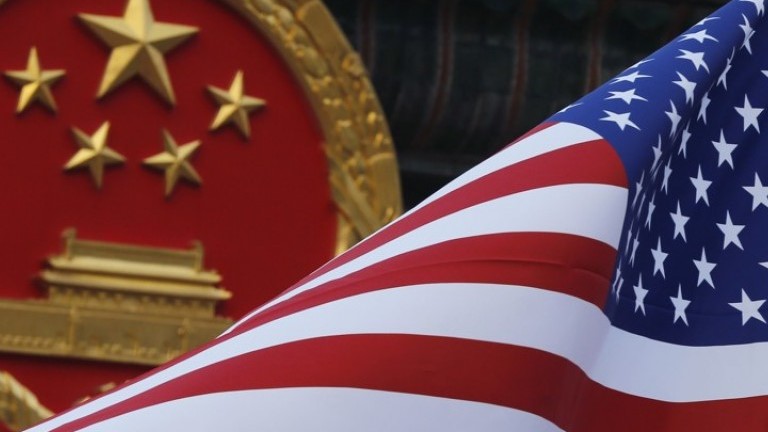Deep Dive Into US China Relations
Published 14 September 2020 | 5 minute read
On 9 September, 2020, experts of the Hinrich Foundation were invited for a virtual conference by the INSEAD Asia-Europe club to explore the ramification of the new Cold War for future US-China relations and Asia. INSEAD is one of the leading the world's leading and largest graduate business schools with campuses in Europe (France), Asia (Singapore), the Middle East (Abu Dhabi) and North America (San Francisco).
The event titled, “INSEAD Asia Europe Club Conference Series: Deep Dive into US-China Relationship”, looked into the deteriorating relationship between the US and China in the field of trade, and technology that has also escalated the geopolitical tension. The virtual event was attended by nearly 100 participants. They included INSEAD’s current MBA students and alumni, and Hinrich Foundation scholars and alumni.
The event was moderated by Dr Andrew Staples, Director of Research and Outreach at the Hinrich Foundation. The panellists included:
- Stephen Olson, Research Fellow, Hinrich Foundation
- Alex Capri, Research Fellow, Hinrich Foundation and Visiting Senior Fellow, National University of Singapore Business School
In his opening remark, Olson discussed the root cause of the trade war between the US and China. He also highlighted the architecture of the WTO that was created in the aftermath of World War II. It was predicated on the Western principles and believed that a change would come about in the economic system of countries upon their accession to the WTO.
“We have not yet figured out how to reconcile two fundamentally different economic systems under the framework of a single set of international trade rules”, Olson said.
In terms of developments in the phase one deal between the US and China, Olson said that there are external issues that require more attention, such as the impending US presidential election, coronavirus pandemic, and the rising geopolitical tensions in the South China Sea, among others. These issues have pushed the trade agenda to a side burner.
He pointed out that some elements in the phase one deal are being fully implemented but the centrepiece of the agreement, which requires China to purchase a mutually agreed volume of agriculture products, looks ambitious under the best circumstances as China is far behind its purchasing target for the current fiscal.
Looking from the technology perspective, Capri opined that there is going to be an acceleration of fragmentation of value chains and countries will increasingly thread their ideology with how technology will be used.
“As we are seeing the phenomena of techno-nationalism taking place, we are going to see an acceleration of strategic decoupling. But in order to have that we must have reshoring or relocation of manufacturing operations from China back to domestic country with the more ringfenced environment”, Capri said.
On moving manufacture away from China, Capri believes that automation in the manufacturing process would have led to localisation of production and restructuring of the supply chain. This gives an opportunity for other countries to build their capacity in different industries that would bring in different kinds of economic growth.
The impending US presidential election will play a key role in the deteriorating relationship between the US and China. Olson observed that the substance of the trade policy under the Democratic party’s presidential candidate Joe Biden might not be different than that of Trump.
“Biden has been clear that he wants to pursue a US worker-centric trade policy that looks like Trump’s policy such as strengthening enforcement on subsidies, and technology transfers, among others”, Olson said.
However, Olson pointed out, there are two areas where we might see a difference in approach. “Biden has much greater respect for the value of the international institutions. He also believes in the power of alliances, in particular the North-Atlantic alliance”.
During the one hour conference, Capri shared his view on China’s reliance on semiconductor chips from the US. He said that in the short-term, the US could shut down the supply of the chips if its relationship with China deteriorates further. But in the mid-term, we could see China producing large quantities of standard chips, not the leading edge chips, to service a fairly large chunk of the consumer market.
In terms of future trends in global trade, Olson said that we might see countries turning to regional trade agreements because the WTO, in the short-term, will not be able to play the ambitious role of a global trade referee. He further said that the pandemic is going to put more emphasis on shorter supply chains, and more regional trade.
“The CPTPP gives an opportunity to shorten the supply chain and diversify trade away from both the US and China. In the short-term, it will not be a surprise to see an increasing number of countries joining the CPTPP", Olson said.
In their concluding remarks, Olson said that till early 2021, the trade agenda is going to be kept on a low simmer. However, Capri said we are in a paradigm shift, which is bigger than the trade war. It is the systematic differences between the two countries, which would lead to more fragmentation, and localisation.
© The Hinrich Foundation. See our website Terms and conditions for our copyright and reprint policy. All statements of fact and the views, conclusions and recommendations expressed in this publication are the sole responsibility of the author(s).





